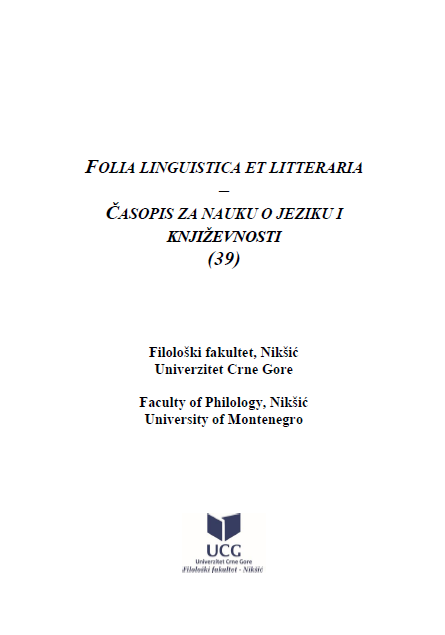THE EMPEROR'S NEW CLOTHES, A STORY BY HANS CHRISTIAN ANDERSEN AND A FILM BY ANTE BABAJA: INTERMEDIAL STORYTELLING AS AN OBSTACLE COURSE FOR POLITICAL ALLEGORY
THE EMPEROR'S NEW CLOTHES, A STORY BY HANS CHRISTIAN ANDERSEN AND A FILM BY ANTE BABAJA: INTERMEDIAL STORYTELLING AS AN OBSTACLE COURSE FOR POLITICAL ALLEGORY
Author(s): Andrijana Kos-LajtmanSubject(s): Other Language Literature, Film / Cinema / Cinematography
Published by: Filološki fakultet, Nikšić
Keywords: Ante Babaja; The Emperor's New Clothes; Hans Christian Andersen; feature film; intermediality; political allegory
Summary/Abstract: The Emperor's New Clothes (1837) by Hans Christian Andersen is a classic of children's literature, but also holds an emblematic position in the sphere of world literature and culture in general – it is one of the most translated stories/fairy tales, published in numerous languages all around the world and transposed into various media, but it is also a story with a rich semantic potential which allows for diverse and stratified interpretations. The focus of this paper is the comparative analysis of the famous Andersen story, and the eponymous feature film by the Croatian and Yugoslav director Ante Babaja, filmed in 1961. The screenplay was written by Božidar Violić, who adapted Andersen's story for film. The Emperor's New Clothes is the first feature film by this renowned director, and also the first Croatian feature film in colour. The unusual adaptation by Babaja is interesting on several levels and for several reasons – both strictly poetic reasons (the approach is atypical, where the standard scenography is absent, and white surfaces take its place along with the so-called high-key film photography, done by Oktavijan Miletić), and reasons of a wider scope, related to reception. Babaja's film enables different readings than the ones based on Andersen's template by intervening into the motif and narrative dimensions of the original story, but also through transgressions at the stylistic level (intermedial contact with stage acting), and, especially, the socio-political context in which the film originated (socialist Yugoslavia). More precisely, Babaja's The Emperor's New Clothes reinterprets Andersen's story by adding to it a concrete socio-political allegory of (not only) former Yugoslavia, while at the same time not discarding the central space of Andersen's story – the relation between collective conventions and individual consciousness, cowardice and courage, submission and freedom, as the archetypical spaces of human communities.
Journal: Folia Linguistica et Litteraria
- Issue Year: 2021
- Issue No: 39
- Page Range: 147-165
- Page Count: 19
- Language: English

